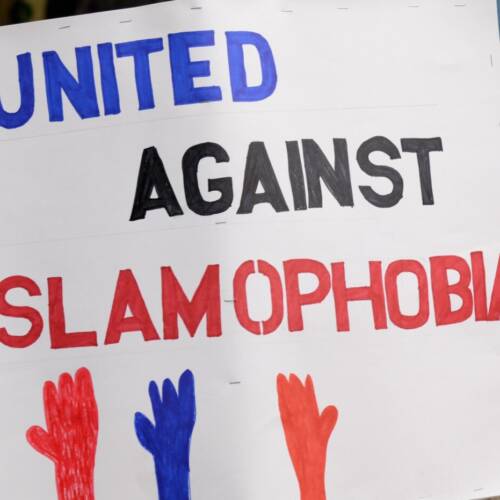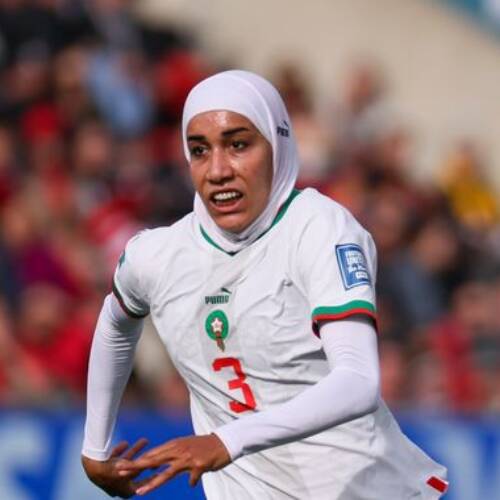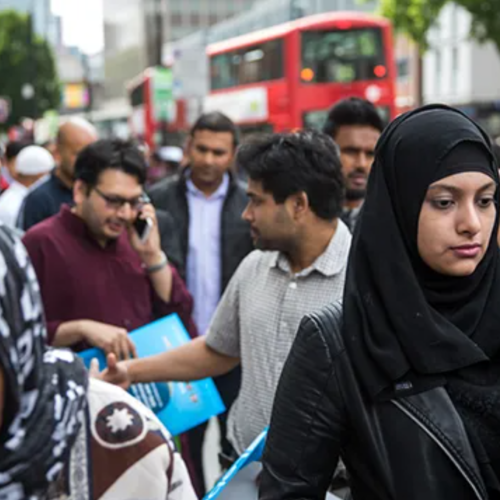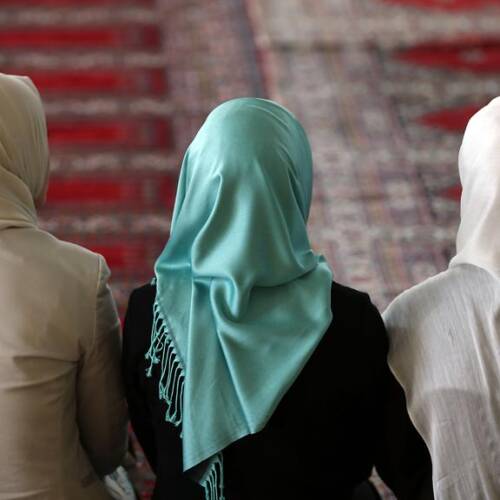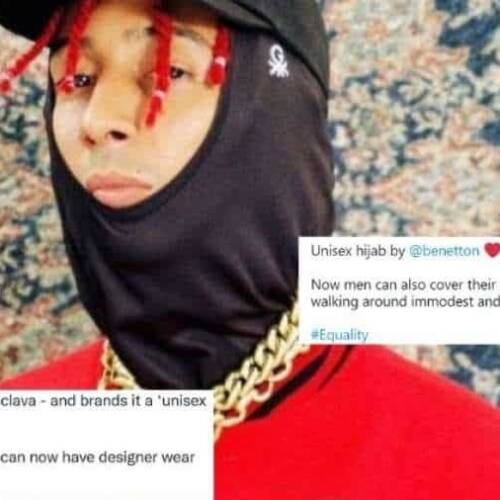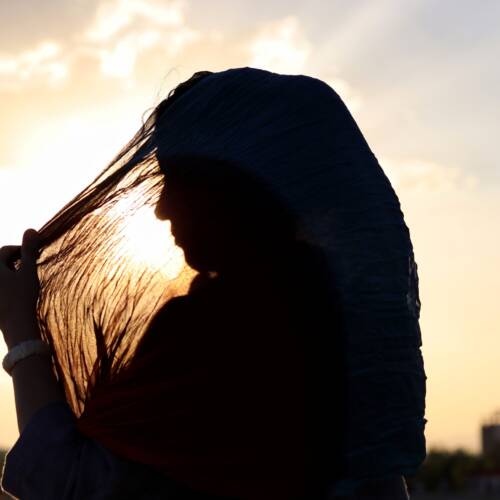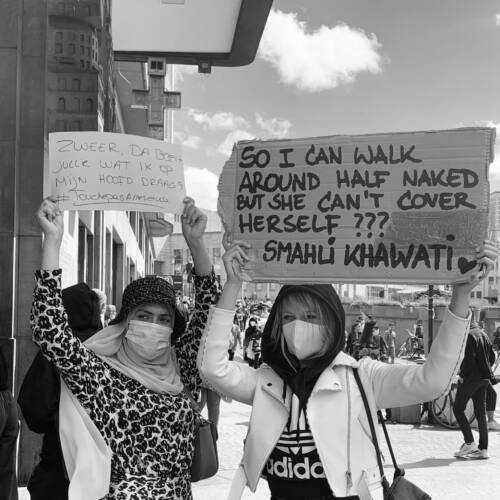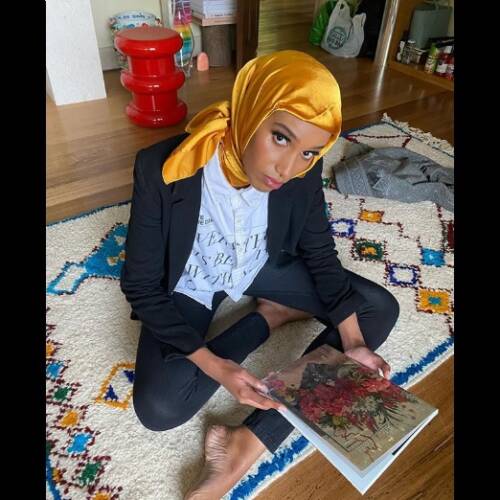
Spiritual Veiling
10 Aug 2020News flash (or not) – as you may know, there has been a surge in hijabi bloggers removing their hijab and evoking a mixed array of controversial reactions from Muslim communities. The debates range from questions regarding faith, feminism, individualism, personal autonomy, female and Muslim identity representation (or misrepresentation), the definition of freedom as we interpret it, and ultimately the bridging niche between western liberalism and an Islamic lifestyle. Are the decisions of these influencers highlighting more broadly a clash of ideals? Does it raise the question of whether modest fashion is in actual fact a farce? Did these women deserve streams of backlash for what is ultimately their individual choice?
Well, as the saying goes, focus not on people, focus on ideas. Whatever one’s opinion may be, the fundamental point here remains the same: outwardly famous hijabi bloggers in the modest fashion industry, have removed their hijab. Whether we deem it individual choice or causally linked to other factors, the cases highlight a lack of synchronicity in the continuance of adorning the hijab within those spheres. I argue that the most fundamental element of hijab which needs to be repeatedly brought to the forefront of discussions regarding its importance, is the notion of spiritual veiling. By doing so, we elevate the conversation of hijab beyond the actions of individuals, beyond its physical representation, and rather analyse the spiritual origins of hijab that has been heavily deducted from the conversation pertaining to the hijab’s presence as a social identity in the public sphere.
World Views
The Western worldview is dominantly secular, meaning with the absence of religion – the concept of a soul is also absent. In the Islamic worldview, every action for the sake of God has a physical manifestation, resulting from a spiritual intention and purpose in light of it being for the betterment of the soul.
The pillars of Islam, be they prayer or pilgrimage, have little value without the concept of a soul being the driving-force and aspect of the human being that will benefit. Actions of the world are constrained by time, and place, as are our humanly forms. But the soul is eternal. The soul is therefore immortalised and excels when aligned to a view that it is the eternal world we are after.
The Modest Fashion industry existed in both these realms. Its industry is a social construction evolving within a largely Westernised societal framework, yet carries the underlying sacred tenants of modesty which are cherished by many. The Modest Fashion industry therefore, for better or worse, saw the overlapping of these two worlds, and as a result, has faced the vast complications of doing so.
Physical Vs. Spiritual Veiling
The reason the hijab is one of the areas in which there is room for so much discussion, is because Islam itself has enabled it to be one of the tenants where a degree of personal choice and societal adaptation is permissible. Yet even as a broader concept, on a practical level, it’s important to distinguish the spectrum of people’s various understandings of modesty. On a spectrum, as women, our journeys of veiling are largely individual, depending on which aspects of veiling we focus on – physical, spiritual, physical and spiritual, physical not spiritual, spiritual but not physical. Individually, the internal compass in us usually knows where exactly we stand on the spectrum.
Islam intends for modesty, like every other aspect of faith, to be a combination of the physical and spiritual for both men and women. Yet, whilst we all are familiar with the physical hijab – spiritual veiling; being the more invisible and internal concept, has not dominated the narrative around hijab in due proportion in relation to its importance.
What is Spiritual Veiling?
The heart and essence of the practice of veiling goes deeper than just its physical form. It is the notion of soul-veiling, or in other words, maintaining a mental self-observation and accountability over how modesty impacts the thoughts, decisions and actions one takes. The notion of spiritual veiling is instructed upon men and women equally in the Quran, and in fact, with an emphasis on men first. The verses often referenced can be found in Quran [24:30-31].
This highlights how Islam emphasises modesty as interlinked with sensory experience. It is therefore the internal hijab; an internal process, serving an eternal purpose, which at the heart of it is the reason hijab enables closeness to God. By veiling your sensory organs from the world of sins, desires, and immoral actions, the curtains placed between us and those sins, then act as an opening of light between us and God. This of course does not insinuate one should be a hermit or recluse from society – rather it means, whilst present in society, one aims to constantly strive to be observant over the self in relation to God, over our own track of deeds, over the spiritual intentions behind our physical actions. It is intentionality with God, after all, that improves our relation with Him, and which will testify for us in the next life.
Importantly, spiritual veiling is not just an individualistic lifestyle, but it is a system within which God has encompassed our conjoined pursuit of morality. Hayaa is a concept that has been heavily interlinked to the notion of modesty in Islam. Inner shyness and shame, which goes hand in hand with the male characteristic of gheyra. Hayaa and gheyra work hand in hand to ensure men and women equally take self-accountability of their own modesty and guard each other’s, for believers are guardians of each other. Hayaa is intended for a woman to honour her own modesty as well as that of a man’s, and gheyraa is intended for a man to honour his own modesty, as well as that of a woman’s. This then works with the concept of na mahrams – those from the opposite gender in front of whom God has ordained social boundaries in the Quran.
The hijab is the social function that ties together all these concepts, and it is out of internal free will we honour its spiritual functionality. With a relationship of respect between men and women, and frameworks established for social relations in terms of etiquettes and boundaries, on a systemic level, Islam intends for society to cherish modesty as a custom of faith, as modesty is heavily linked to the notions of morality and societal lifestyle in Islam.
Why? Because it is at the heart of modesty is self-accountability. When one has modesty over their eyes, what they hear, their thoughts, their words, their desires, their overall character, there is an element of shame every time one sins and transgresses the God-given rights of their own organs. However, with an absence of modesty, there is little sense of shame over the self left. And when our inner shame towards our own selves slowly dissipates, then there is little likelihood of maintaining shame before God.
Modesty aims to guard the inner shame of individuals, so through the mechanism of that inner shame, they may treat: 1) God, 2) ourselves, 3) every other individual they encounter, with the utmost respect and etiquette. If you can respect yourself in privacy and if you can respect other people with the best of your mannerisms and conduct, inherently you are respecting God. And this is why there is a link in the Prophet of Islam’s words when He says, “I came to perfect your morals”, and equally, “without modesty there is no faith.” Faith is inherently linked to the concept of modesty because it was intended as a deep, spiritual concept which relates to every individual’s journey of self-purification, an observation over each of our physical sensory organs, in order to sanctify the soul that our bodies house, in our eternal journey of return to God.
Therefore, whilst material definitions of ‘freedom’ consist of one’s physical attire, and in many ways the Modest Fashion industry has subtly reinforced the notion of finding freedom through exposure of appearance – Islamic spiritual definitions of freedom are all in relation to the soul. To free oneself of the physical constraints of defining ourselves solely based on physical representations, for the purpose of reaching the higher realms of intellectual and spiritual heights. As we lessen our internal focuses on the material, and delimitate its importance in perspective of the soul, it enables the achieving of grander spiritual heights.
This is why in Ramadan, through the lifestyle of awareness, one’s faith automatically excels. Without perhaps realising, we are subconsciously far more aware of the modesty of our sensory organs whilst fasting, because stricter rules are in place, and either way we intrinsically don’t wish to dishonour our fast. This is often why by the end of Ramadan we find spiritual healing from the month, and also are lighter and more susceptible to the light of faith, as we have placed a boundary on many of the physical sins we may usually be engrossed in.
The spiritual veiling of modesty works in a very similar way to the etiquette of Ramadhan, yet the intention in modesty is for it to be a constant in one’s life, so the veiling between ourselves and physical actions which may dishonour the soul, can bridge the soul in closeness to God as opposed to desires of the world.
The Issue
The modest fashion industry, and the social media representation of Islamic hijab, in many ways completely deducted the notion of spiritual veiling. But simultaneously, this issue is not black and white, and we must address it with due regard for the variance of nuances involved.
Firstly, the modest fashion industry in the West helped the evolvement of the public presence of the hijab – it deemed the hijab more socially ‘acceptable’, it lessened the daunting feeling of alienation. It offered ideas and options for how to wear modest hijab at work, in the gym, in an educational setting, for outings, for evening wear etc – which helped the normalisation of the hijab and to integrate within wider society.
Yet undoubtedly, what was inherently missing was any relation between the representation of hijab on a physical form, and the truer essence of hijab as a spiritual identity. The absence of spiritual veiling heavily impacted how the Hijab was therefore symbolised – inclusive of the ads, the conduct, the speech, the subtle insinuations of what it was ‘okay’ for a Muslim girl wearing hijab to do. It may be asked, was it really the responsibility of fashion bloggers to care for the merging of physical and spiritual modesty? As the first industry to acclaim representation of the hijab, the Modest Fashion industry inevitably landed a sense of leadership over veil representation within social spheres. It could be argued this is due to the organic way in which it grew with steady exploration into previously unknown territories. But now looking back in hindsight over a decade of its development and existence, it is clear there has been such very little acknowledgement, accountability or understanding present in the public sphere in relation to the spiritual etiquette associated to the veil. In fact, the industry as a whole followed a completely adverse trajectory, where there was steadily little difference between hijabi fashion blogging and fashion blogging. It is what it is – as long as we’re clear it’s not, and shouldn’t even subconsciously be considered a wholesome representation of the hijab as an Islamic concept.
When there is an absence of spiritual veiling in the equation, it means that the hijab being represented is not the same hijab intended from a spiritual worldview; it’s perhaps half a story, if you like. It also means conflicts will inevitably rise in the promotion of hijab as just a physical garment, as the intended heart and purpose of it is no longer relevant. As a result of its vast outreach, the hijab as a result of the commercialisation of these spheres has been deducted to being perceived as only a clothing item, and is far removed from its spiritual essence. The Modest Fashion interpretation of hijab secures its place in the form of a Westernised-Muslim social (and sometimes political) identity, as opposed to a more wholesome spiritual identity.
The deduction of the spiritual essence does have detrimental effects on the overall societal perception of hijab in this way. The fact that youth in particular may find familiarity in the social identity of veiling is great for the purpose of communal belonging, but this also places a heightened responsibility on Muslim communities to ensure we celebrate efforts to also intellectualise the hijab – and the women who stand accomplished in their relevant familial, communal, educational, work and social spheres, whilst also championing the notion of spiritual veiling.
Conclusion
It can be argued that the trajectory of the Muslim fashion industry has become hegemonic over Muslim female identities, yet does not account for the many nuances present in veiling, and not accounting for the importance hijab places on refining the soul through the inner principles of modesty. As Modest Fashion was a new concept, this is expected – but we must now do more to reach an equilibrium; for our younger generations to know that even within veiling, there is a choice of which aspect you choose to represent within yourself. This element of self-accountability as individuals and communities alike should not be likened to anti-reformist critique – rather, an opportunity to flourish and regain the thresholds of the vaster social and intellectual implications of the hijab. And I don’t believe pointing fingers or playing a blame game is in any way effective – the only fingers we should be pointing is at our own selves. Because modesty is a movement, not a fixated milestone that any of us have reached to the degree of perfection. Whether we are the head-to-toe abayah wearers and can make space for reforming our spiritual etiquettes, or the people with a cherishing for cultural modesty wanting to do more; in our own ways, we’re all journeying.
Ultimately, I’d argue the irony of the Modest Fashion industry is that hijab is not about looks. The essence of hijab is to elevate the female as a spiritual-intellectual existence, and is therefore even in line with movements calling for women’s rights in the West. I believe the more we exert efforts to alter the representation of hijab beyond a physical object, the greater wars we will win in the longer term, when it comes to championing policy debates about the appropriate presence of hijab in public and educational spheres. If it’s merely perceived as a cloth, it reduces its value. But it’s difficult to argue with the notion that hijab is indeed a cherished heritage encompassing an esteemed right to sanctity.
The wider our efforts for the education of our own hijab, particularly by highlighting the esteemed intellectual and spiritual heights of the female role models established in Islam – who were perfectly educated and aware of their own rights, such as, Khadijah, Fatima, Zainab – the more accepting surrounding society will also be of the spiritual honour there is to the hijab’s code of conduct. The more we make this distinction clear, the more the nuances between veiling approaches are made obvious, the less social pressure and more love and freedom will be reattributed to the essence of modesty.
Yes we can and should care about how we wear our hijab, but that’s not the whole picture. The essence of spiritual veiling doesn’t need to be considered ‘backwards’, nor eliminated from conversations surrounding the hijab in the public sphere. The hijab, in its wholesome form is not limiting, it is rather intended to enable freedom – in a soul sense. No, we don’t have to change or belittle, or highlight only parts of its essence to fit in. Yes, we love our hijab, and no we aren’t oppressed if we choose not to cross our physical boundaries for the sake of a greater spiritual purpose. The hijab is the gift of a deep and highly ethical, intellectual, spiritual social identity – and it is only more beautified when it is granted the freedom to manifest the origin of its spiritual essence.


